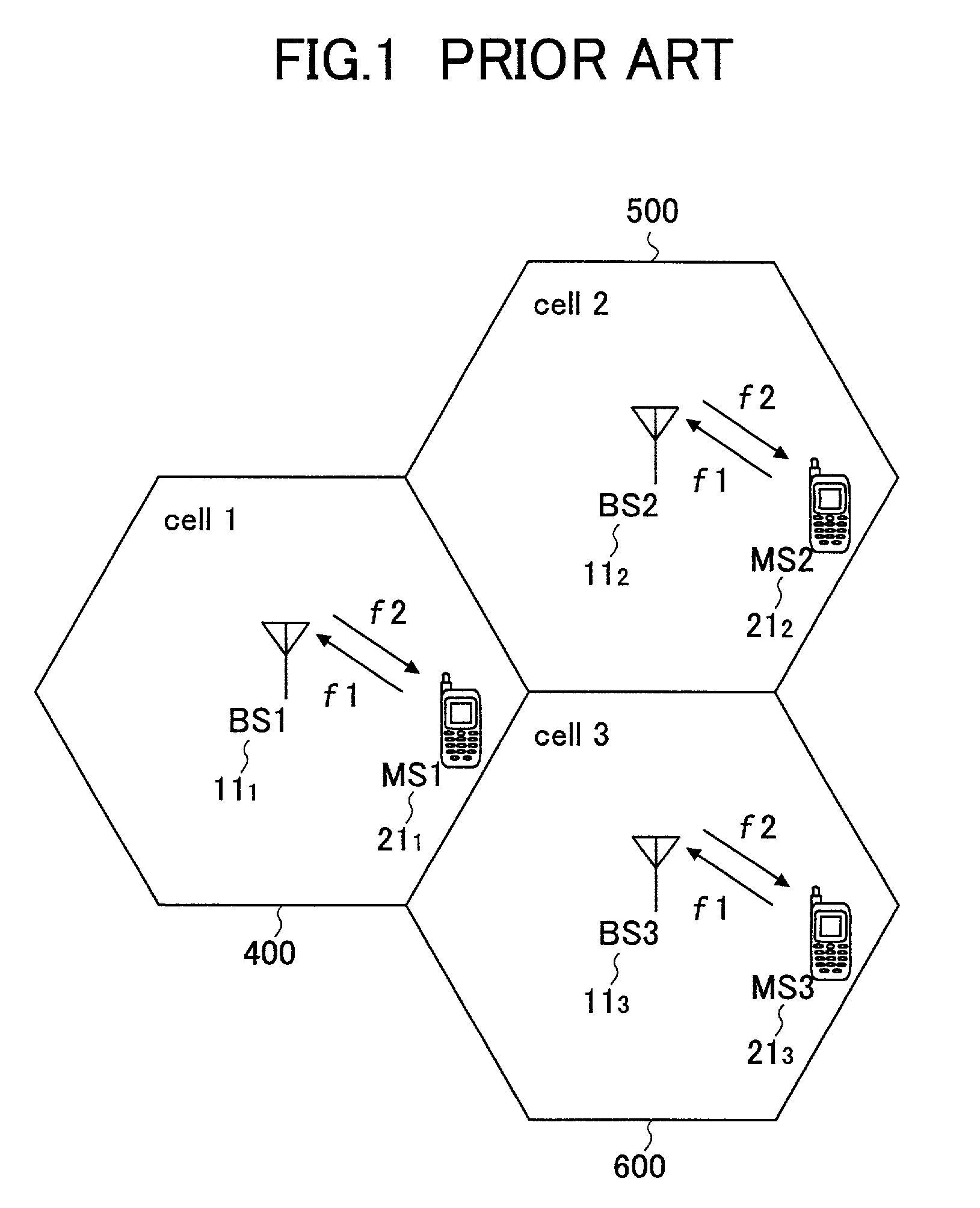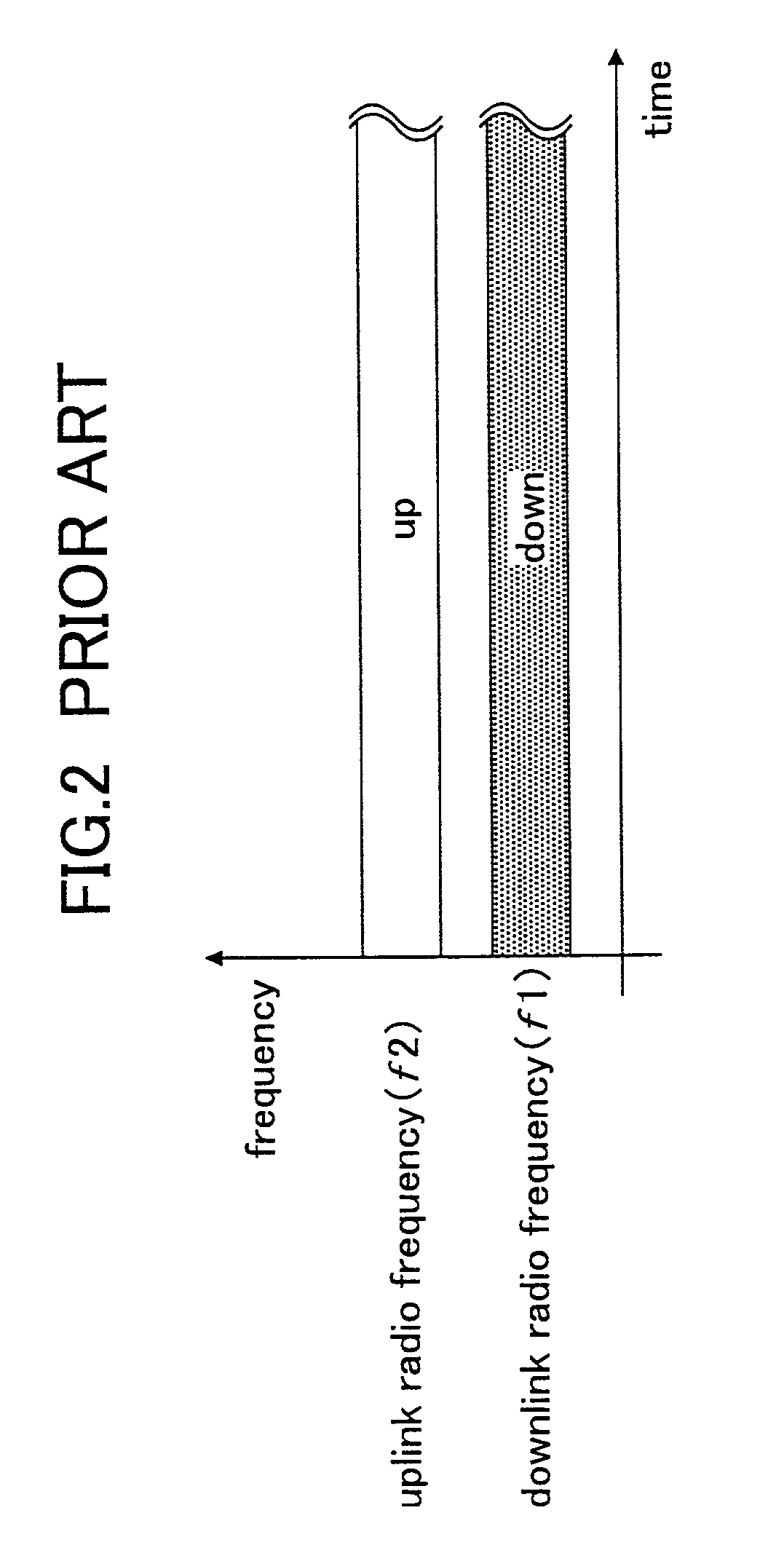Mobile communication systems
a mobile communication and system technology, applied in the field of mobile communication systems, can solve the problems of data communication likely to produce asymmetric situations, waste of radio resources such as time slots or frequency bands, and restricted transmission capacity of the system, so as to achieve efficient use of radio frequency resources without complicating the structur
- Summary
- Abstract
- Description
- Claims
- Application Information
AI Technical Summary
Benefits of technology
Problems solved by technology
Method used
Image
Examples
Embodiment Construction
[0053]The details of the preferred embodiment of the invention will now be described with reference to the attached drawings.
[0054]FIG. 8 illustrates an example of the cell structure of the mobile communication system according to an embodiment. The mobile communication system comprises base stations (BS1-BS3) 101-103 positioned in cells 100, 200, 300, respectively, and mobile stations (MS1-MS3) 201-203 connected to the associated base stations 101-103 via radio communication to achieve voice communication, non-telephone communication, and other types of communication.
[0055]In this system, radio frequency f1 is used on the uplink from the mobile stations 201-203 to the base stations 101-103, and radio frequency f2 is used on the downlink from the base stations 101-103 to the mobile stations 201-203. These frequencies f1 and f2 are equally used in all the cells.
[0056]FIGS. 9A-9C illustrate three types of communication modes used in the mobile communication system in an embodiment. In...
PUM
 Login to View More
Login to View More Abstract
Description
Claims
Application Information
 Login to View More
Login to View More - R&D
- Intellectual Property
- Life Sciences
- Materials
- Tech Scout
- Unparalleled Data Quality
- Higher Quality Content
- 60% Fewer Hallucinations
Browse by: Latest US Patents, China's latest patents, Technical Efficacy Thesaurus, Application Domain, Technology Topic, Popular Technical Reports.
© 2025 PatSnap. All rights reserved.Legal|Privacy policy|Modern Slavery Act Transparency Statement|Sitemap|About US| Contact US: help@patsnap.com



